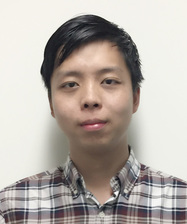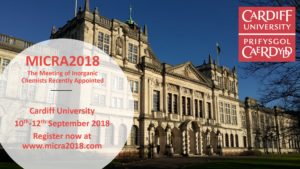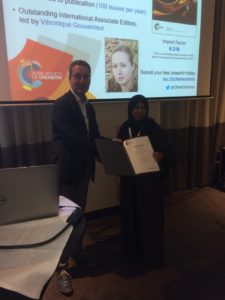Synthesizing nanomaterials consisting of two-particle pairs, or dimers, is no longer a headache. Hongyu Chen and coworkers from Nanjing Tech University, China recently developed a protocol that can produce gold dimers with a record high yield. This breakthrough is published in Chem. Commun.
Dimers are suitable platforms to study the effects of particle-particle interactions on the electrical and optical properties of the constituent materials. Unfortunately, no conventional synthesis methods to exclusively produce dimers from single particles have been successful. This is because of the uncontrollable particle-aggregation rate that leads to the formation of multi-particle clusters. Therefore, how to couple single particles into dimers without triggering their further aggregation has become a tough nut to crack.
Chen and coworkers found a solution by developing a polymer-assisted method that generates gold dimers with high yield. Firstly, they encapsulated individual gold nanoparticles with polymer shells made of polystyrene-b-poly(acrylic acid). Under optimized conditions, the gold nanoparticles were mostly coupled into dimers (Figure 1), achieving a dimer yield of 65%. This is the highest dimer yield achieved for one-step synthesis methods.

Figure 1. (a) A transmission electron microscopy (TEM) image of the polymer-encapsulated gold single particles. (b) A TEM image and (c) a scanning electron microscopy image of the synthesized gold dimers. All scale bars are 200 nm.
The key to this success is due to three factors: temperature, solvent composition and acid concentration. All these factors can change the strength of the repulsion force among the polymer shells. The force must be meticulously tuned to a level that is weak enough to induce 1-to-1 coupling, but strong enough to prevent 1-to-multiple or multiple-to-multiple aggregation. Through a set of control experiments, the authors identified the optimal conditions to be 60 oC, dimethylformamide/water (v/v)=6:1 and 5 mM of hydrochloric acid.
The method demonstrated herein could be extended to other particles. It may also inspire versatile synthesis strategies towards complex nanostructures with high selectivity.
To find out more please read:
Controllable Oligomerization: Defying Step-Growth Kinetics in the Polymerization of Gold Nanoparticles
Xuejun Cheng, Gui Zhao, Yan Lu, Miao Yan, Hong Wang and Hongyu Chen
Chem. Sci., 2018, DOI: 10.1039/C8CC03424A
About the blogger:
 Tianyu Liu obtained his Ph.D. (2017) in Physical Chemistry from University of California, Santa Cruz in the United States. He is passionate about scientific communication to introduce cutting-edge research to both the general public and scientists with diverse research expertise. He is a blog writer for Chem. Commun. and Chem. Sci. More information about him can be found at http://liutianyuresearch.weebly.com/.
Tianyu Liu obtained his Ph.D. (2017) in Physical Chemistry from University of California, Santa Cruz in the United States. He is passionate about scientific communication to introduce cutting-edge research to both the general public and scientists with diverse research expertise. He is a blog writer for Chem. Commun. and Chem. Sci. More information about him can be found at http://liutianyuresearch.weebly.com/.













 Tianyu Liu obtained his Ph.D. (2017) in Physical Chemistry from University of California, Santa Cruz in the United States. He is passionate about scientific communication to introduce cutting-edge research to both the general public and scientists with diverse research expertise. He is a blog writer for Chem. Commun. and Chem. Sci. More information about him can be found at
Tianyu Liu obtained his Ph.D. (2017) in Physical Chemistry from University of California, Santa Cruz in the United States. He is passionate about scientific communication to introduce cutting-edge research to both the general public and scientists with diverse research expertise. He is a blog writer for Chem. Commun. and Chem. Sci. More information about him can be found at 





